In this interview, AZoLifeSciences talks to Ph.D. student Ben Williams about his recent research recording the acoustics of coral reefs and analyzing the results with machine learning to help monitor coral reef health and track restoration.
Please can you introduce yourself and tell us about what led you to research coral reef monitoring and restoration?
I am currently a Ph.D. student at University College London (UCL) and the Zoological Society of London (ZSL). I got involved with coral monitoring and restoration after finishing my undergraduate at the University of Exeter. A brilliant internship opportunity came up for a couple of undergraduates to join fieldwork starting out on a coral restoration. I was able to take that opportunity and then progress into a research master's with the team afterward to continue this work.
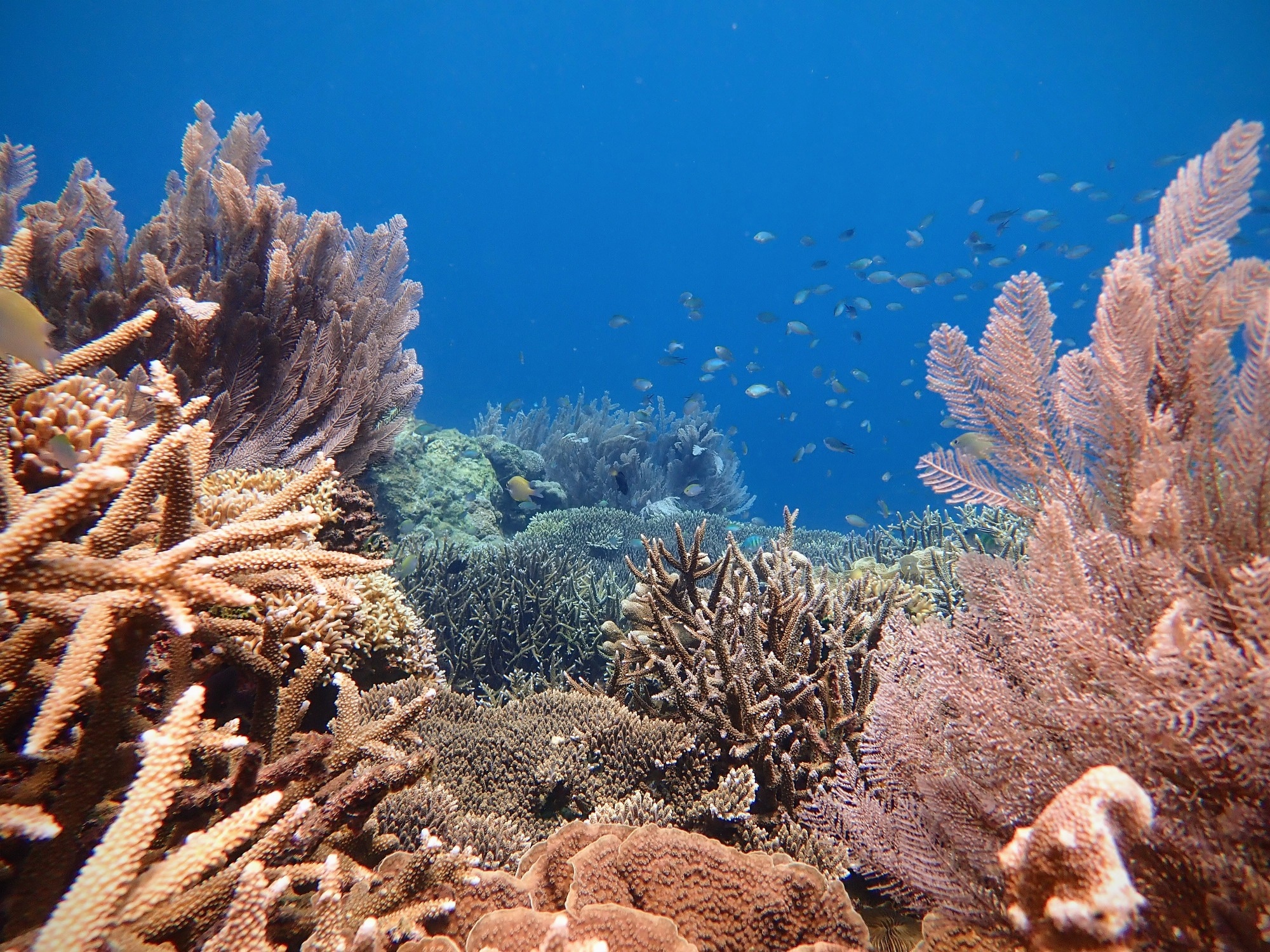
A healthy coral reef in Sulawesi, Indonesia. Image Credit: Tim Lamont, University of Exeter
What threats are coral reefs facing at the moment?
I think most people associate climate change with being the main threat, which is certainly true in recent history and going into the future. But they face so many other local threats as well. Overfishing and overexploitation have really reduced the size and number of fish we see in many of these habitats. Another big threat is nearby land-use change that leads to the pollution of coastal habitats which can decimate reefs.
A lot of these processes can be destructive. Dynamite fishing was observed at the sites where we were. This destroys large areas of reefs, converting them to rubble, and the reefs never recover unless they are given decades, if not longer, to do so.
I think most people associate climate change with being the main threat, which is certainly true in recent history and going into the future. But they face so many other local threats as well.
Your study used recordings taken from the Mars Coral Reef Restoration Project, a project currently restoring reefs in Indonesia and expanding across the world. How can coral reefs be restored?
There are loads of methods that can be used to restore coral reefs. At the project we worked on in Indonesia, they used what is called the MARRS system. Here, they use hexagonal steel frames that we call "Reef Stars” which get what we call ‘corals of opportunity’ strapped to them. Loose fragments of coral that are lying on the reef are attached to these frames and then large areas of degraded reef are carpeted with the reef stars.
Within just a couple of short years, the coral recovers to a really impressive degree of coral cover. It can go from less than 5% back to 60%, which is what we want to see on a healthy reef. That also attracts all the fish to start leading to the succession of these habitats.
It is a great way to bring back these restored reefs and it is carried out in collaboration with the local island communities. So for the MARRS work, the local communities of Badi and Bontosua island have been involved at every stage of the process, from getting the corals onto the reef stars to going out and planting these onto the reefs.
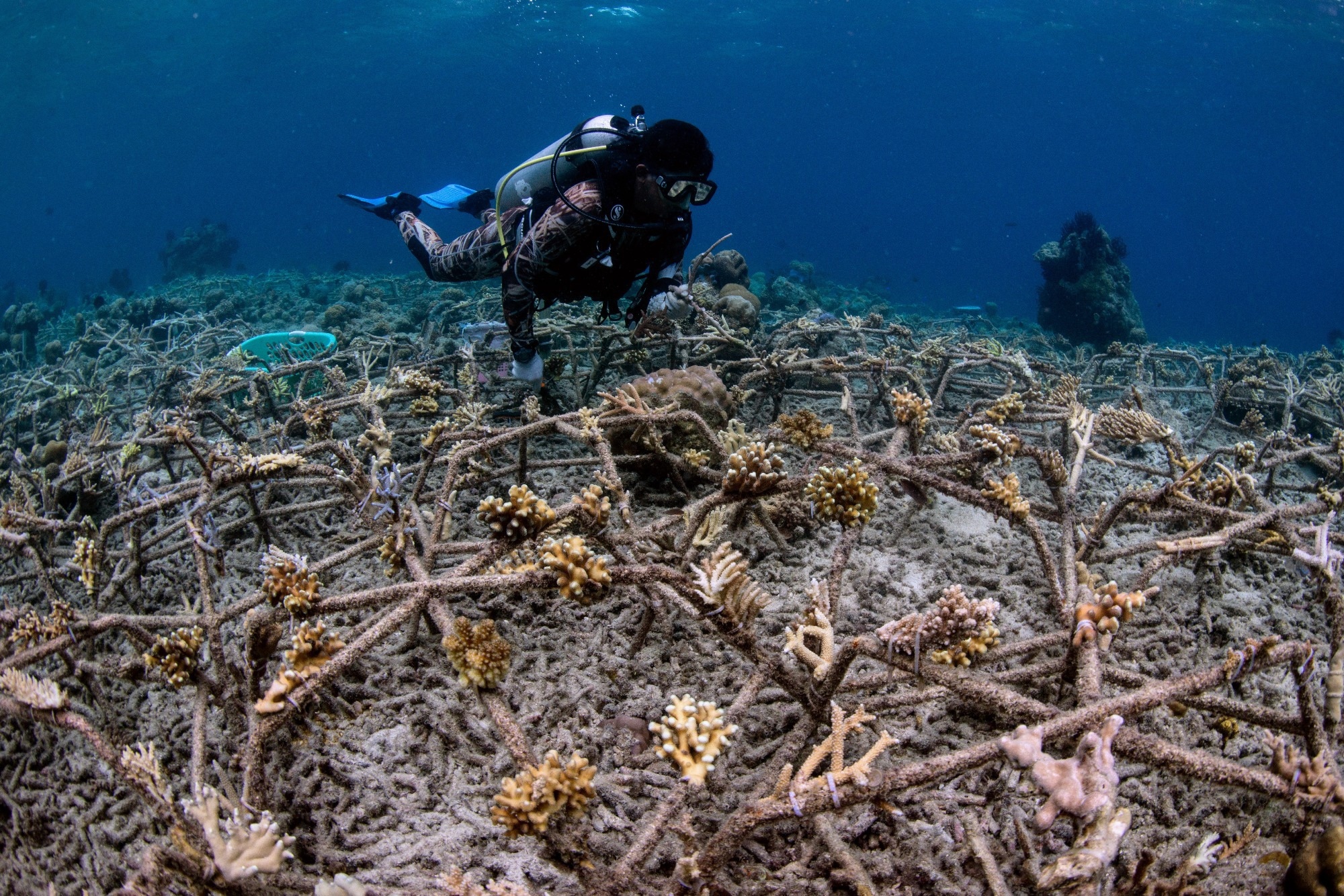
Reef Stars are installed on degraded reefs to restore corals and fish. Image Credit: The Ocean Agency
How can marine soundscapes be used for the ecological monitoring of marine habitats?
It is surprising to a lot of people to hear that, especially on coral reefs where this work has been pioneered, they are really noisy habitats. All the fish and invertebrates produce a diverse array of sounds.
On a healthy reef, this creates a really complex soundscape where there is a lot going on. So we have got the crackling of snapping shrimp in the background normally and then this added to layers of fish noises in the lower frequencies. But in a degraded reef, these added transient sounds, as we call them, of different organisms communicating or feeding are often missing because there is much less going on these reefs. We just hear this kind of crackling background of snapping shrimp with none of that other added complexity.
That enables us to learn about the health of these habitats and I certainly think we can apply this to other marine habitats as well and see what we can learn from these. But it has really been developed and pioneered on coral reefs so far.
What is passive acoustic monitoring and what can it tell us about the health of a coral reef?
The process of passive acoustic monitoring (PAM) involves deploying hydrophones on the reefs that are left there to listen. They can record for days, weeks, months, maybe even longer. I would love to see some left longer term. They allow us to collect data sets over this period. We then recover them and study that data to look at all the things we just mentioned, seeing what kind of sounds are going on in these habitats.
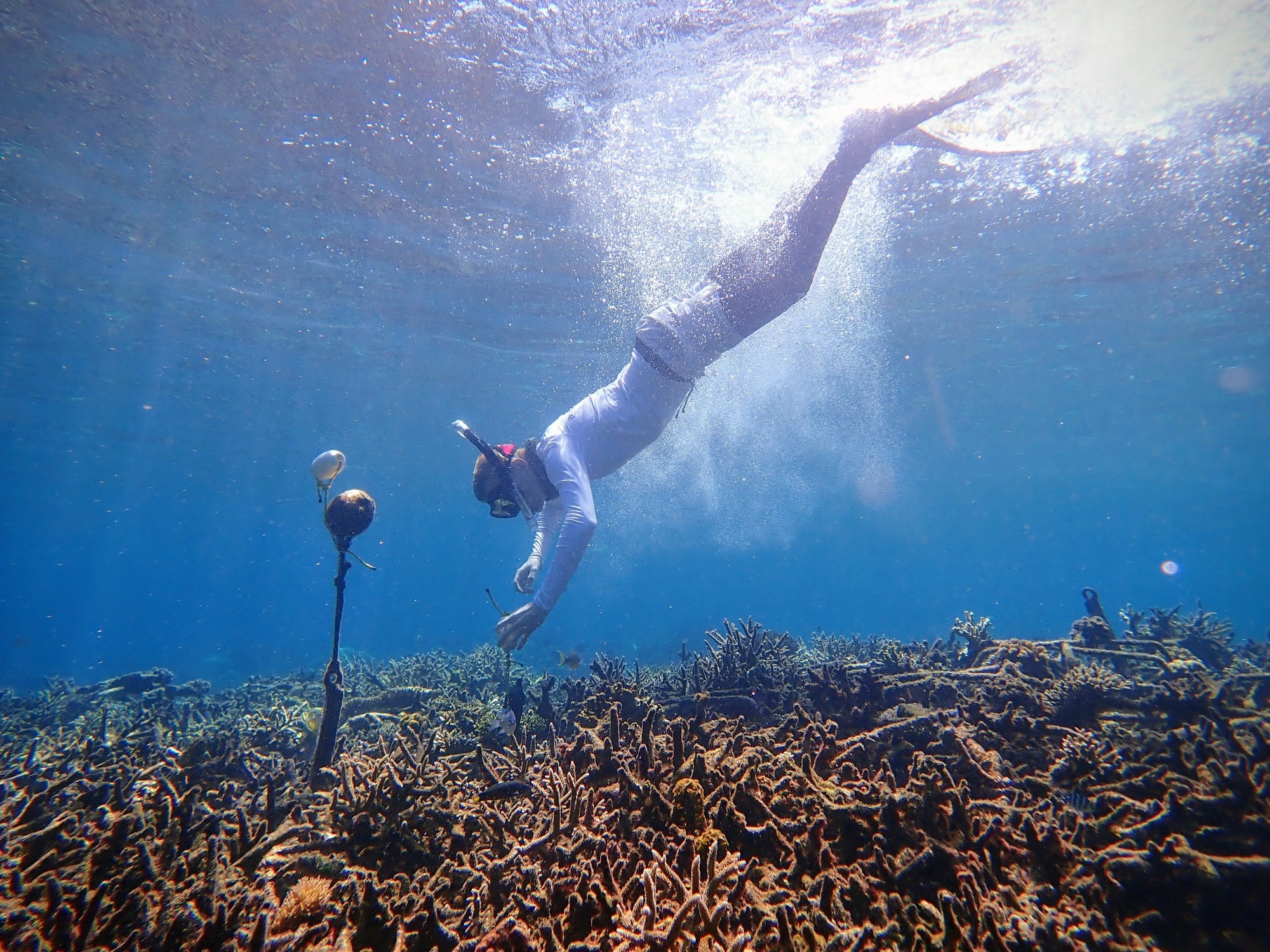
A researcher deploys a hydrophone on a coral reef for passive acoustic monitoring. Image Credit: Tim Lamont, University of Exeter
Why has assessing the health of coral reefs been difficult to achieve in the past?
Typically we have used standard visual surveys where we put divers in the water. This can be really complicated because it takes a lot of expertise to identify all the fish you can see and complete all the transects that are done for coral cover. It is also logistically really complicated, as you can imagine, especially in some of the remote locations where we sometimes work.
Further, we might only be able to collect recordings for a snapshot in time, perhaps the 20 minutes in any given day where the divers happened to be on that spot of reef. Then they might not be back there for a year or even longer and a lot can change in that time period.
Many of the processes on reefs are then overlooked because we are not finding out what happens at night, or what all the cryptic organisms that are hidden are up to because we cannot see them. Acoustics allows us to overcome some of those obstacles. Traditional visual survey is a good complement. Given that acoustics is so easy, it is a great way to get quick and easy data if that is how we want to start out.
How have you used machine learning to overcome previous limitations and effectively monitor coral reef health?
Previously with our soundscape work, we have lacked an automated way to analyze the work that is reliable. The best method we had was to manually listen and simply count down the sounds that we heard.
We did a similar study to the one just published using the same sites, where we manually counted the number of fish sounds we heard. We saw a difference between the healthy and degraded reefs and we saw that the restored reefs were more similar to the healthy reefs. However, that took ages and was very labor-intensive.
Using machine learning, we were able to feed AI recordings of healthy reefs and degraded reefs so that it could learn the difference. Once it had done this, we tested it on recordings from reefs that it had not heard and it did a really good job at classifying these correctly.
That meant we had confidence when we gave it recordings from the restored reefs that we were going to get a relatively accurate assessment of how they have been getting on. That is how using machine learning with passive acoustics has enabled us to progress in this field and overcome challenges.
Science communication has been especially important and prevalent over the last few years. How has science communication been a part of your work so far, and what role do you believe it plays in environmental science and conservation?
I think science communication is really important in terms of engaging the public and making them aware of some of the issues that certain habitats are facing whilst relating to the problems. Most people I talk to about the sounds of coral reefs do not even realize that fish have ears or that they can make sounds.
We find acoustics is a great way of putting you there in the moment. Playing a particular sound to someone can really help them relate to that habitat so much more. Hearing that this amazing thing that they just heard about is under threat and might not be around much longer is what helps get people interested in what we need to do to protect and restore these reefs. We have taken every chance we can to speak with the media, talk to school groups and go to conferences, trying to spread the word about what is going on and raise public interest.
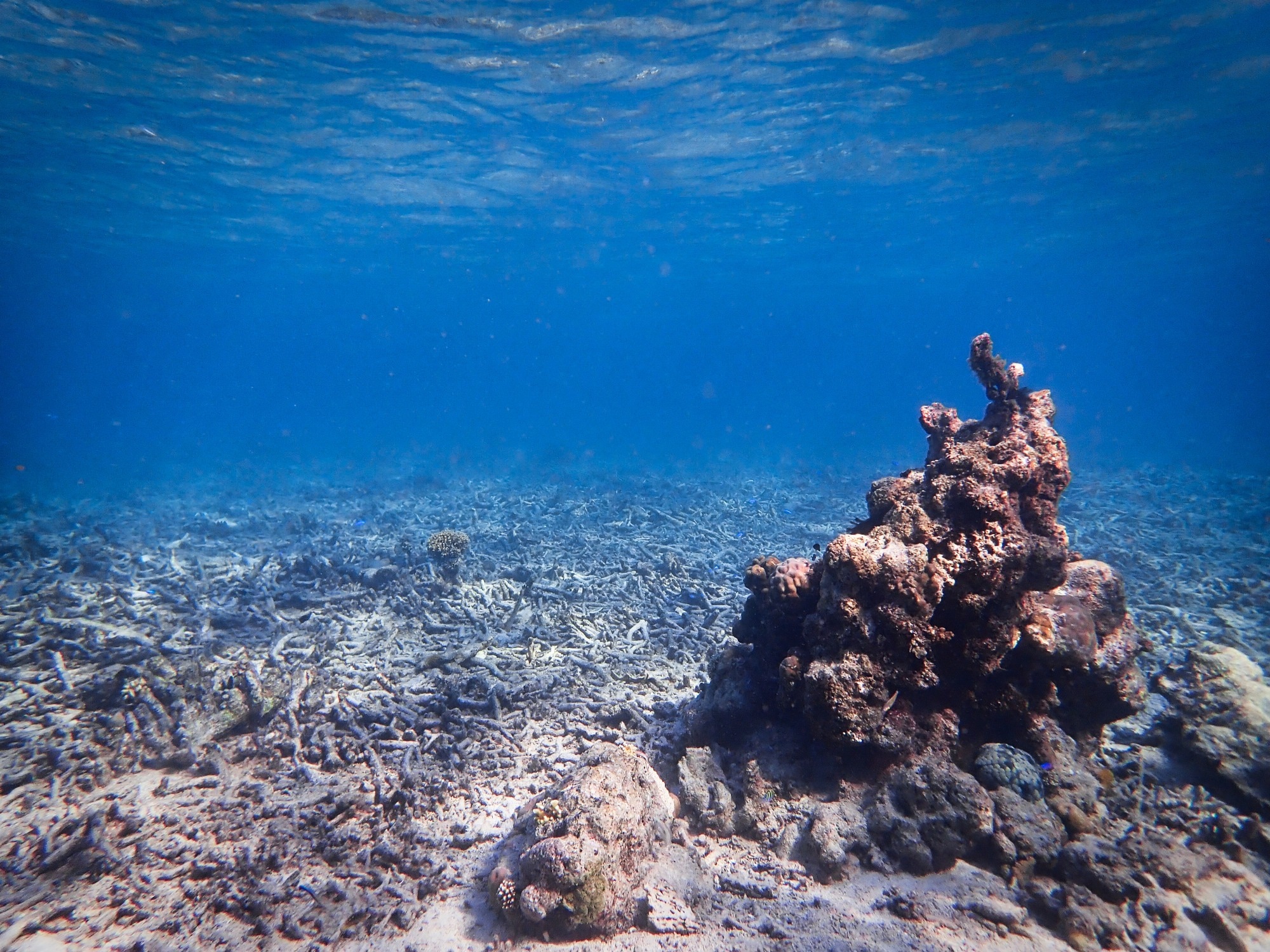 A degraded coral reef in Sulawesi, Indonesia. Image Credit: Tim Lamont, Lancaster University
A degraded coral reef in Sulawesi, Indonesia. Image Credit: Tim Lamont, Lancaster University
How could your research be used to help fight the threats faced by coral reefs and promote a healthy future for reefs and the organisms they provide a habitat for?
Through streamlining the way that restoration projects can perform their monitoring, we are hoping that this will help us better understand the techniques and the locations where these restoration approaches are working. It will also help these projects spend more of their time on the important work which is restoring the reef. Hopefully, less time has to be spent on the labor-intensive monitoring that has previously been used.
There are also some other approaches called acoustic enrichment that our group has explored where you can play back the sounds of healthy reefs on a degraded habitat. It will actually attract more juvenile fish to come and settle at these sites.
We would love to try this with corals and time it with mass spawning on reefs. Perhaps if you play it over the two weeks where that mass spawning might occur, you can try and attract that next generation of coral and fish to go settle on a habitat. I think these kinds of novel approaches are going to show a lot of promise as we develop them further.
What do you believe are the most important steps for coral restoration now and over the next few years?
I think what is really key is continuing to upscale restoration because most projects have been performed at quite a small scale so far.
We also need to address the way these projects are being performed. An important point is that we need to target some of the more thermally resilient coral species out there on the reefs. They might have more of a fighting chance as climate change progresses because there is no point in restoring a mass area of really fragile species that is just going to bleach in the next heat wave.
To do that is going to involve work with local community groups. Colleagues recently found from a survey of Indonesia that there are over 500 restoration projects just in Indonesia alone and most of them are on small scales, but they really add up together. Getting support for these groups and the right training so that they can perform effective restoration is going to be key to seeing this practice have its maximum impact.
I think what is really key is continuing to upscale restoration because most projects have been performed at quite a small scale so far.
Could this passive acoustic monitoring combined with machine learning approach be applied to other aspects of marine biology and conservation?
Yes, it certainly could. There has been really fascinating work on cetacean communication where machine learning and AI have been used to identify different species. They have led a lot of the field in a different way.
There are lots of other habitats, not just coral reefs, for which researchers face exactly the same problems where conservation and restoration projects are ongoing, but they are struggling to monitor the work that they are doing. Passive acoustics could certainly help in a similar way.
We need to go and explore these places and see if there is useful information in the soundscapes, but I am sure in most, if not all, there is.
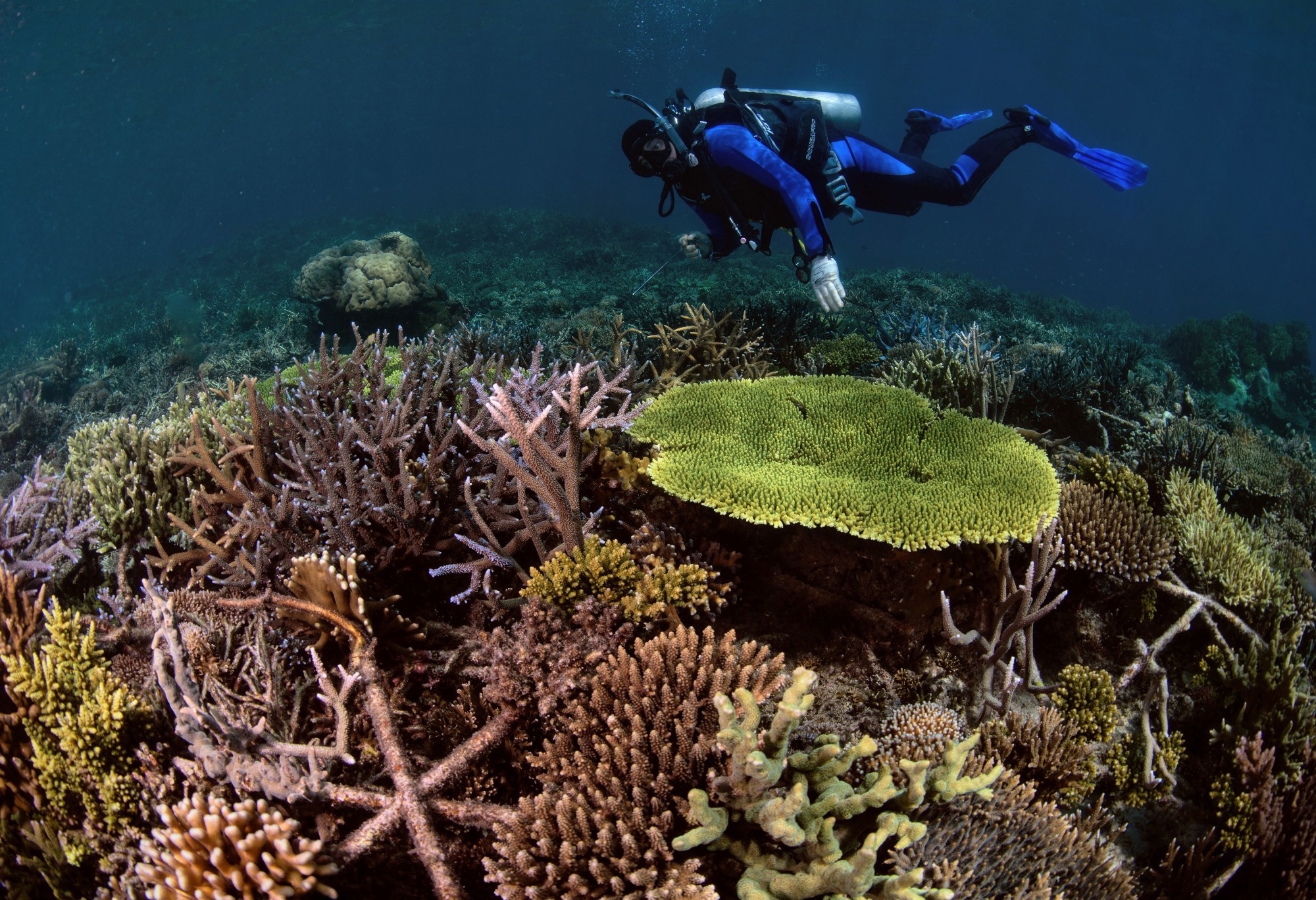
A restored reef 3 years after installing "Reef Stars". Image Credit: The Ocean Agency
What is the next step for your research?
The next thing is to explore whether we see this phenomenon globally. We have targeted several other restoration projects, including ones in the Great Barrier Reef, Mexico, and the Maldives, to try and repeat this study and see if we are going to observe this difference between the soundscape of healthy and degraded reefs universally. We want to see whether this difference is observed again in restored habitats universally, in that they converge back to the soundscape of a healthy reef.
From this, we want to look at the potential of a universal AI model that could be applied anywhere in the world. I think that this is a long shot, but it would be really impressive if we were able to achieve that goal.
Is there anything else that you would like to add?
The other thing that I think is often really interesting for people to know is that the soundscape is so important because it is the first cue that juvenile fish and corals use when they drift out into the open ocean to return to the reef to settle on. That is really important for a restoration project to know - that their reef has a healthy soundscape that is going to bring back that next generation.
Where can readers find more information?
Follow Ben on Twitter: @_ExeBen_
Learn more about the sounds we hear on coral reefs here: https://youtu.be/POITH02VVrw
Learn more about the MARRS restoration project here: https://buildingcoral.com/
Link to the original research paper: https://doi.org/10.1016/j.ecolind.2022.108986
About Ben Williams
Ben is currently a Ph.D. student based at UCL and ZSl in London. Currently, his work is focusing on passive acoustic monitoring and how this can be used to support coral reef restoration. Prior to this Ben completed a research master's and an undergraduate degree in biological sciences at the University of Exeter. Over the past three years, his work has taken him to Indonesia, Australia and French Polynesia.